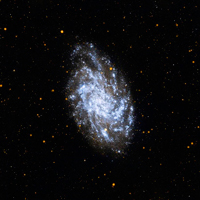GALEX CAUSE Consortia
- Keck Institute for Space Studies (KISS)
- Cornell/KEPLER Consortium (KEPLER)
- WIS/TAU/Technion/Haifa Consortium (WTTH)
- GAMA/Herschel-ATLAS/DINGO Consortium (GHD)
Keck Institute for Space Studies (KISS)
The Keck Institute for Space Studies has generously contributed to our efforts to complete the All-Sky coverage. Their contribution was crucial to getting this effort off the ground and covered the first month of post-NASA operations.
Cornell/KEPLER Consortium (KEPLER)
The Cornell/KEPLER consortium will use GALEX in scan mode to cover the KEPLER Satellite field at a range of timescales from one day to one month with effective exposure times for individual epochs of ~0.1ksec. These data will be used to generate candidates for photometric monitoring with the KEPLER Satellite, and produce complete deep Near-UV coverage of the KEPLER field.
KEPLER Consortium Members:
Cornell University:
James Lloyd
WIS/TAU/Technion/Haifa Consortium (WTTH)
The WIS/TAU/Technion/Haifa (WTTH) consortium will conduct a wide-field and relatively shallow UV variability survey. Numerous sky patches overlapping the SDSS will be tiled using short exposures (~0.1 ksec) and monitored for variability continuously during June-July 2012, at a cadence of 3 days and implemented to optimize the areal coverage and field visibility within the constraints of GALEX operations and the data reduction pipeline. WTTH will support this effort from the ground using the PTF and the telescopes at the Wise observatory that will cover the same areas in the optical. Our main science goals are: (a) a study of early UV emission from SNe (2) AGN variability (3) stellar flares (rate and luminosity distribution); we will search the nuclear variability data for tidal disruption flares (though the expected rate is small).
WTTH Consortium Members:
Weizmann Institute of Science:
Avishay Gal-Yam
Tel Aviv University:
Dan Maoz
Ehud Nakar
Dovi Poznanski
Technion - Israel Institute of Technology:
Ehud Behar
University of Haifa:
Doron Chelouche
GAMA/Herschel-ATLAS/DINGO Consortium (GHD)
The GAMA/Herschel-ATLAS/DINGO (GHD) consortium--an international collaboration of 17 institutions--will use GALEX as part of their efforts to study cosmology and galaxy formation by observing the universe in ultraviolet to radio wavelengths. GALEX will survey the UV emission from 350 thousand galaxies being measured at optical wavelengths using the spectrograph on the 3.9-m Anglo Australian Telescope by the Galaxy And Mass Assembly (GAMA) consortium, at infrared wavelengths using the European Space Agency's 3.5-m Herschel Space Observatory by the Herschel-ATLAS consortium, and at radio wavelengths using the Australian SKA Pathfinder telescope (ASKAP) by the Deep Investigations of Neutral Gas Origins (DINGO) consortium.
GHD Consortium Members:
Austraslian Astronomical Observatory:
Andrew Hopkins
Max Planck Society for the Advancement of Science,
Max-Planck-Institut fuer Kernphysik:
Richard J. Tuffs
University of Central Lancashire:
Cristina C .Popescu
University of Western Australia
International Centre for Radio Astronomy Research:
Martin Meyer
University of Canterbury, Christchurch:
Loretta Dunne
European Southern Observatory:
Jochen Liske
BAER Institute:
Pasquale Temi
University of California, Irvine:
Asantha Cooray
University of Sydney:
Joss Bland-Hawthorn
Istituto Nazionale di Astrofisica (OAPD Padua):
Gianfranco de Zotti
Institut d'Astrophysique Spatiale, Universite Paris Sud:
Guilaine Lagache
Laboratoire d'Astrophysique de Marseille:
Denis Burgarella
Royal Observatory Edinburgh:
John Peacock
University of Durham:
Peder Norberg
Liverpool John Moores University:
Ivan Baldry
University of Hertfordshire:
Martin Hardcastle
University of Queensland:
Micheal Drinkwater
Last updated on September 18, 2012




